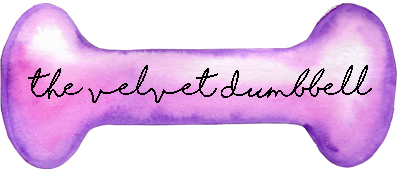What We Know vs. What We Do
“I had no idea that I should eat more vegetables.”
Whether we like vegetables or not, we all know that we should eat them. This, much like the advice to “wash your hands after going to the bathroom” is something that we learn at a young age, never to be forgotten, albeit perhaps ignored. Even if we grow up in families that aren’t particularly healthy, there is no doubt that at some point we learn that vegetables are good for us. However, despite knowing this information, we often have trouble incorporating this healthy habit into our life.
Years ago in high school choir, I sang harmony to an old, melodic Scottish folk song that could just as easily apply to the common struggle we face in bridging the gap between what we know and what we do.
“The water is wide I cannot swim ore.
And neither have I the wings to fly.
Give me a boat that can carry two
And we both shall row
My true love and I.”
The chasm that exists between knowing that we should eat more vegetables and actually eating vegetables is vast, and in order to “swim ore,” we need a reliable boat in the form of actionable steps.
Almost all trustworthy and reputable nutrition plans espouse the benefits of consuming a diet rich in colorful vegetables (however, the quantities of starchy vegetables consumed, such as potatoes and squash, continues to be a hotly debated topic). In an effort to better our health and achieve our nutrition goals, we are encouraged to drink more water, eat slowly and mindfully, eat to 80% full, and always eat more vegetables. This recommendation is usually presented as a straightforward step without much expounding.
In my experience of coaching clients, rarely is eating more vegetables something that can be attained as easily as the short sentence suggests. This one step is far more complex, nuanced, and difficult to accomplish than encouraging one to simply drink more water or eat mindfully. Telling someone to consume more vegetables in order to better their health is like telling a person to improve their marriage by loving their spouse more. Of course we know this to be true, but exactly how does one go about doing that?
While it is important to be reminded of how vegetables are nutrient dense, low in calories, and high in fiber, additional advice is needed in how to practically integrate them into our diet. In order to truly better our health and the health of our clients, it is time that we go beyond the three words “eat more vegetables” and deconstruct this singular statement into actionable steps that can be followed. These three words are deserving of so much more.
A few years ago I attended an Al Anon support group for families and friends of those who struggle with alcohol. Founded on the principles of Alcoholics Anonymous, I learned about the Twelve Step Approach. The path towards sobriety was not one giant step entitled ”Getting Sober,” but instead was broken down into specific steps to practice. Each week’s group focused on addressing one of the twelve steps, so that over time freedom became possible and sustainable. This process was referred to as “working the steps.”
I am certainly not equating the challenge to eating more vegetables as similar to becoming sober, nor am I saying that they take equal effort, but I respect that Al Anon (and Alcoholics Anonymous) recognizes that the journey to lasting change is made up of small steps to be focused on separately, rather than one giant, ambiguous leap.
Perhaps we should approach eating more vegetables in a similar manner to the Twelve Steps. We need our own “Steps to Practical Change” in the hopes that working them will lead to new healthy habits.
“Habits are the invisible architecture of daily life. We repeat about 40 percent of our behavior almost daily, so our habits shape our existence, and our future. If we change our habits, we change our lives.”
So where do we begin?
Honestly, I’m not exactly sure. But I do know that I will be pondering this topic further in the coming months in order to develop practical steps that we can focus on and implement that will make eating more vegetables more attainable. Other than reducing the amounts of ultra-processed food and not eating in a caloric surplus, consuming vegetables is one of the best ways to become healthier, but it is often the hardest. Through research, knowledge, and practice, I will begin to construct this boat and once built, I shall invite you to join me as we un-anchor and dare to cross ore.
Stay tuned.


